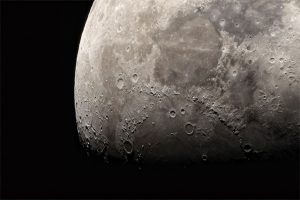Lunar Maria
Astronomer Denilso Camargo on the Moon formation and the major environmental features of the lunar surface
Which particles within cosmic radiation can be dangerous during travels to other planets? How can tardigrades help to develop systems for the future space missions? Research Scientist at Massachusetts Institute of Technology Christopher Carr describes properties of habitable spacecraft of the future.
It’s not outside the realm of possibility, and because B. subtilis can also go into a spore state you might envision maybe a card or some other collection of, you know, different spores of these engineered organisms, and when you wanted to make something in particular, it could be a drug, but you can imagine that synthetic biology could also play a role in your life support system, or maybe in combination with a food growth, or some other crop production, or some other feature that you might want to have as part of your Mars mission.
There’s a big problem with synthetic biology systems in that right now we’re really at the infancy of the field, it’s becoming easier to do the engineering of a genome, but we also need ways to analyze these systems, and you might be able to build in a reporter like fluorescence, for example, or some other reporter, but you might also want to monitor it at a more fundamental level. In that you might want to know if the genetics are stable, and so we’re building an instrument to go search for life on Mars based on the idea that life on Mars, if it in fact exists, could be related to life on Earth. So we’re building a small RNA and DNA sequencer, and the idea there is that if we had a device like that, say, with human explorers or on a robotic mission, it can be used to monitor a synthetic biology system.
One of the things that we did was to take a number of different components and expose them to analogues of space radiation. We exposed them to neutrons at the MIT nuclear reactor, in particular, we didn’t use the reactor itself we used a californium source and to provide a neutron exposure that would be commensurate with a mission to Mars. Neutrons not being one of the primary components in radiation, but is a very common secondary [component]. And then we also used components of space radiation like protons, which you can get both from Solar radiation as well as galactic cosmic radiation. And so we exposed our reagents to protons, and we also exposed them to heavy ions like iron and oxygen down at Brookhaven National Lab.

Astronomer Denilso Camargo on the Moon formation and the major environmental features of the lunar surface

Physicist Paul Hartogh on primordial materials, escape of the atmosphere, and the Giotto mission

New research suggests that muscle capacity is the most important factor determining a hummingbird’s maneuverab...